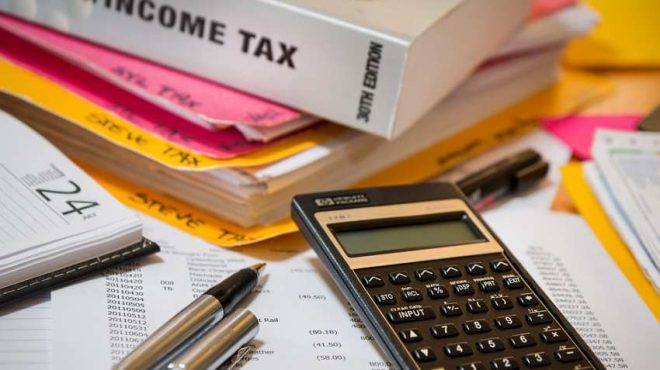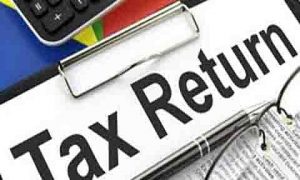Since most earning individuals file the ITR-1 form, it is vitally important for them to know about the essential documents they must keep handy during the ITR filing
The last date for filing the income tax (I-T)returns (ITR) for FY2021-22 and the Assessment Year (AY) 2022-23 is July 31, 2022. Thus, earning individuals are advised to file their ITR for FY22 and AY23 by filing the respective ITR-1 and ITR-2 forms.
Since most earning individuals file the ITR-1 form, it is vitally important for them to know about the essential documents they must keep handy during the ITR filing. Earning individuals with an annual income of up to Rs 50 lakh from salary, one house property and other sources can file their income tax returns using the ITR-1 form.
Read More: How to file ITR-1 online for FY 2021-22
Regarding the income from other sources, the individual should not be a director or a company nor he/she should have a shareholding in an unlisted company. In order to make the filing of I-T returns easier, the Income Tax department has been making efforts to improve the process. The department has done this by offering pre-filled ITR forms. The individuals can file their ITR returns either online or offline.
Last Date To File Income Tax Returns –. For those taxpayers whose accounts are not required to be audited, the last date of filing the income tax return is also July 31, unless the date is extended by the government.
Below mentioned is the list of documents one must keep handy while filing his/her income tax returns this year: –
- Form 16 – It is a Tax Deducted at Source (TDS) certificate provided by the employer of the taxpayer. Form 16 includes details such as taxes deducted, and deposited during the financial year as well as salary paid. It is obligatory for an employer to issue Form 16 if taxes have been deducted by him/her. The form has two parts – Part A and Part B. the employee can check if Form 16 has been digitally signed or not and all the details in both parts of the form are correctly filed by the employer. An employee can download Form 16 Part A and Part B from the TRACES portal of the Income Tax department. The pre-filled information in ITR forms, under the head ‘Income from Salary’, is in accordance with the details available in Part B of Form 16. Meanwhile, the last date for issuing Form 16 by an employer is June 15.
- Form 16 A, Other TDS Certificates – Besides Form 16, earning individuals must also collect other TDS certificates applicable to them. In case of interest earned on fixed deposits (FDs) in FY2021-22 crosses Rs 40,000 (Rs 50,000 for senior citizens), the banks will deduct tax on it. Moreover, the bank will also be required to issue Form 16A to the individual for the tax deducted. For the dividends paid during FY 2021-22, mutual funds and companies issue Form 16A for the tax deducted, provided the amount exceeds Rs 5,000. Likewise, individuals getting monthly rent of Rs 50,000 or more, should collect Form 16C (TDS certificate) from their tenants. According to the current income tax laws, tenants giving monthly rent of Rs 50,000 or more have to deduct tax from the annual rent amount paid. Meanwhile, people who sold land, or property during 2021-22 should ask their buyer to provide Form 16B for tax deducted on the amount. TDS is obligatory if the property or land is sold for more than Rs 50 lakh.
- Interest Income, Other Interest Certificates – Income tax return forms ask individuals to furnish a break-up of the interest income they get from various sources such as fixed deposits, savings accounts, etc. An interest certificate summarises the interest credited or debited on an account.
Read More: How to choose the right ITR form to file returns? All you need to know
Banks issue these certificates against accounts held by customers, so that they can determine how much interest they have made on their balances in their current and savings accounts, recurring deposits, fixed deposits, etc. Thus, it is important to get interest certificates from the post offices, banks, and other financial institutions and fill in accurate income details in ITR forms as well as claim tax exemptions and deductions.
In case the interest certificate is not available, then an individual must ensure to update and check the bank passbook/s. An individual can claim a deduction of Rs 10,000 under Section 80TTA for interest gained on the savings account. Meanwhile, interest made from recurring deposits, fixed deposits, RBI taxable bonds etc. is taxable in the hands of an individual. Although Public Provident Fund (PPF) interest is exempt from tax, an individual has to report it.
This year the income tax return forms require individuals to furnish details of interest earned from EPF accounts in case the annual contribution surpasses Rs 2.5 lakh. Those who have paid home loan/education loan EMI during FY 2021-22 need to collect repayment certificates from their respective banks/financial institutions in order to claim tax exemption as well as deductions. A deduction for a maximum of up to Rs 2 lakh on the interest paid on home loan EMI can be claimed under Section 24. An individual can claim a deduction under Section 80E for the interest paid on the education loan during FY 2021-22.
- Annual Information Statement – The Income Tax department launched the Annual Information Statement (AIS) in November 2021. It is a statement that contains information about a taxpayer’s financial transactions in a particular financial year. AIS includes details such as a taxpayer’s income, tax details, financial transactions, income tax proceedings, etc.
The statement also imbibes information regarding the tax deposited against an individual’s Permanent Account Number (PAN) with the government. One must download and double-check the financial transactions from the AIS to make sure that all the incomes stated in the statement are reported in the income tax return form as applicable to an individual.
- Form 26AS – This contains annual-tax-related information about an individual. An assessee must download Form 26AS from the new income tax portal. This is a statement which is like a tax passbook that includes information regarding the taxes deducted and deposited against one’s PAN with the government. One must cross-check the details given in Form 26AS with the information available in TDS certificates and interest certificates. The reason for this is that it may happen that the TDS deducted doesn’t reflect in an individual’s Form 26AS because of the wrong assessment year, wrong PAN etc. An individual will not be able to claim credit for the tax deducted if it doesn’t reflect in his/her Form 26AS.
- Capital Gains From Sale Of Mutual Funds, Property, Shares – Taxpayers have to disclose capital gains earned from the sale of shares, mutual funds, or property at the time of filing their income tax returns. Individuals who have capital gains cannot file tax returns using ITR-1, instead, they are required to file returns either in ITR-2 or ITR-3. To calculate capital gains (long-term or short-term) on the sale of land, building or house property, one would require the sale deed of the property. A taxpayer can get a capital gains statement from mutual fund houses or the registrar’s office. Furthermore, gains from bitcoins are also required to be reported for FY 2021-22. ‘
This year the income tax return forms ask the taxpayers for varied information pertaining to the sale of building, which contains:-
A. Details of the year in which money spent on improvement
B. Information regarding the cost of acquisition and indexed cost of acquisition
C. Date of purchase and sale of land/building
D. Buyer details are required in the ITR form if the property located outside India is sold
- Other Key Documents To Keep Handy
- Tax saving investment, expenditure proofs if you opt for the old tax regime at the time of filing ITR
- Dividend income received from investments in shares or mutual funds. A taxpayer can get them from the broker statement or the Demat account summary
- Details of investment in unlisted shares using ITR-2 form
- Bank account details – bank name, account number, account type and IFS code. This also includes the information regarding all closed accounts, during FY 2021-22
- Aadhaar and PAN number
- Rental income – Taxpayers need to preserve their rent receipts as such income needs to be furnished in the ITR
- Form-16A/ Form-16B/ Form-16C: Form 16A, B and C showing TDS deducted
- Salary slips in case of salaried individuals



































